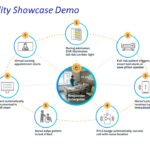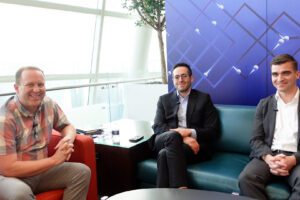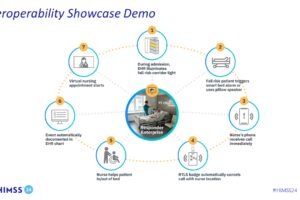The following is a guest article by Dr. Kit Latham, Co-Founder and CEO at Credentially
Workforce burnout is a major problem across the US healthcare system, with approximately one in three physicians experiencing burnout at any given time, according to research. As a doctor, I’ve seen first-hand how the pressure that it places on clinicians and administrative teams can have serious knock-on impacts on organizational outcomes and patient safety.
Much has already been written about how clinician workload and patient demand can be safely reduced. But I believe that, because burnout is fundamentally a capacity problem, the focus should be on ways to bring new staff in more quickly and efficiently.
In order to do this, healthcare’s labyrinthine and inefficient hiring processes must be streamlined. Smart automation, coupled with strategic platform integration, is the way forward.
Outdated HR Processes are Fanning Burnout’s Flames
A lack of workforce capacity – coupled with increased system demand as the prevalence of complex and chronic conditions increases – is at the root of the burnout crisis. But across the majority of US healthcare organizations, and healthcare staff recruitment agencies, slow, admin-heavy, and expensive onboarding processes make it hugely difficult to sustainably fill vacancies.
As reported, maintaining high staff recruitment and retention rates is an essential pillar of any anti-burnout strategy. However, the challenge currently lies in the fact that onboarding new healthcare staff members is typically a slow and effortful process: both for the new hire and for the HR representatives involved.
In most cases, candidate documentation must be manually scanned, emailed, or sent to the organization. This must then be cross-checked with databases, dates verified, information added to candidate relationship management (CRM) software, references followed up with – and that’s all before the candidate can start working. The risk of human error is high, which leaves the organization open to compliance issues and the risk of poor inspection outcomes.
Because of this, it typically takes 2-3 weeks for candidates to move through the onboarding process. During this time, administrative teams encounter a heavy workload and lack the means by which to communicate the process with candidates. The delays and the poor communication mean that, too often, candidates drop out of the process altogether – a costly and frustrating scenario for all involved.
How to Harness the Power of New Automation Tech
However, by implementing a digital onboarding platform, it’s possible to alleviate a significant quantity of workload from administrative teams while ensuring faster and more accurate processing of candidates. By harnessing the power of AI and intelligent automation, digital onboarding software streamlines the entire process for candidates. The technology not only guides candidates through each step, including the automated submission of required documents and references, but it also cross-references or synchronizes the provided information with relevant databases. This enables the software to promptly identify any instances of non-compliance and send timely reminders, ensuring uninterrupted compliance throughout the onboarding journey.
When this technology is integrated with CRM software, issues regarding information duplication are eliminated – as is the need for manual data entry into multiple systems.
As a result, hundreds of hours of organizational capacity are immediately released, and new hires can commence their roles much more quickly without creating additional stress anywhere else in the system.
Embracing the Age of Automation
There’s certainly no silver bullet or miracle cure for burnout. However, there are solutions and strategies with the potential to make a huge difference. Trailblazing early adopters have already proven that automation technologies can fix broken hiring pipelines and heal several major human resource pain points.
Organizations that commit to embracing healthcare’s dawning ‘age of automation’ will be the first to see sustainable reductions to staff workloads and burnout risk, whilst improving compliance and safety, decreasing costs, and improving patient outcomes.
 About Dr. Kit Latham
About Dr. Kit Latham
Dr. Kit Latham studied medicine in the UK at The University of Leeds. He worked as an emergency physician in the NHS before attending London Business School and studying Technology Entrepreneurship at University College London (UCL). In 2016 he founded Credentially, a global SaaS company revolutionizing HR processes and delivering efficiencies for healthcare organizations with machine learning and computer vision technology.













